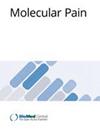Transcriptomic analysis of differentially alternative splicing patterns in mice with inflammatory and neuropathic pain
IF 2.8
3区 医学
Q2 NEUROSCIENCES
引用次数: 0
Abstract
Although the molecular mechanisms of chronic pain have been extensively studied, a global picture of alternatively spliced genes and events in the peripheral and central nervous systems of chronic pain is poorly understood. The current study analyzed the changing pattern of alternative splicing (AS) in mouse brain, dorsal root ganglion, and spinal cord tissue under inflammatory and neuropathic pain. In total, we identified 6495 differentially alternatively spliced (DAS) genes. The molecular functions of shared DAS genes between these two models are mainly enriched in calcium signaling pathways, synapse organization, axon regeneration, and neurodegeneration disease. Additionally, we identified 509 DAS in differentially expressed genes (DEGs) shared by these two models, accounting for a small proportion of total DEGs. Our findings supported the hypothesis that the AS has an independent regulation pattern different from transcriptional regulation. Taken together, these findings indicate that AS is one of the important molecular mechanisms of chronic pain in mammals. This study presents a global description of AS profile changes in the full path of neuropathic and inflammatory pain models, providing new insights into the underlying mechanisms of chronic pain and guiding genomic clinical diagnosis methods and rational medication.炎症性和神经性疼痛小鼠不同替代剪接模式的转录组分析
尽管慢性疼痛的分子机制已被广泛研究,但人们对慢性疼痛的外周和中枢神经系统中的替代剪接基因和事件的全貌却知之甚少。本研究分析了炎症性疼痛和神经病理性疼痛下小鼠大脑、背根神经节和脊髓组织中替代剪接(AS)的变化模式。我们总共发现了 6495 个不同的替代剪接(DAS)基因。这两种模型中共有的DAS基因的分子功能主要集中在钙信号通路、突触组织、轴突再生和神经退行性疾病等方面。此外,我们还在这两种模型共有的差异表达基因(DEG)中发现了509个DAS,占DEG总数的一小部分。我们的研究结果支持这一假设,即AS具有不同于转录调控的独立调控模式。综上所述,这些研究结果表明AS是哺乳动物慢性疼痛的重要分子机制之一。本研究全面描述了神经病理性疼痛和炎症性疼痛模型全路径中AS谱的变化,为慢性疼痛的内在机制提供了新的见解,并为基因组临床诊断方法和合理用药提供了指导。
本文章由计算机程序翻译,如有差异,请以英文原文为准。
求助全文
约1分钟内获得全文
求助全文
来源期刊

Molecular Pain
医学-神经科学
CiteScore
5.60
自引率
3.00%
发文量
56
审稿时长
6-12 weeks
期刊介绍:
Molecular Pain is a peer-reviewed, open access journal that considers manuscripts in pain research at the cellular, subcellular and molecular levels. Molecular Pain provides a forum for molecular pain scientists to communicate their research findings in a targeted manner to others in this important and growing field.
 求助内容:
求助内容: 应助结果提醒方式:
应助结果提醒方式:


